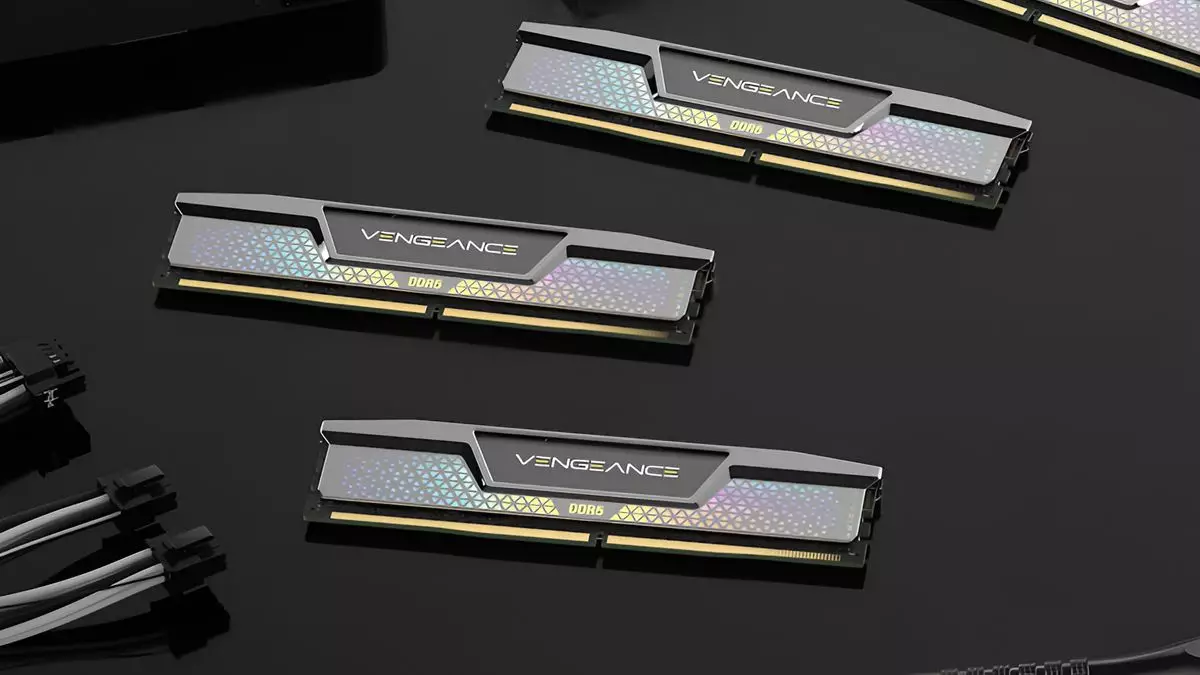In the rapidly evolving world of computer hardware, technology often sees breakthroughs that can shift the landscape of performance expectations and usage. One such innovation is Intel’s introduction of the Core Ultra 200S series processors, which have been positioned as vehicles for groundbreaking improvements despite their lack of record-breaking gaming capabilities. Among the noteworthy advancements these processors support is the new category of memory known as CUDIMMs (Clock Driver DIMMs). As the competitive RAM market heats up, manufacturers like Corsair are quickly embracing the potential of this technology, launching CUDIMMs that hit staggering speeds of up to 9,600 MT/s. This article takes a closer look at the implications of these developments for gamers and PC enthusiasts.
To grasp the importance of CUDIMMs, it is essential to understand the foundational differences between traditional UDIMMs (Unbuffered DIMMs) and the newer CUDIMMs. Traditional memory sticks have had their limitations, primarily constrained by the speeds the memory controller of a CPU could effectively handle. For instance, CPUs like AMD’s Ryzen 9000 series support a maximum speed of 5,600 MT/s. While enthusiasts often delve into overclocking to push these limits and enhance system performance, there remains a ceiling that conventional memory solutions cannot surpass.
CUDIMMs introduce a revolutionary component: a clock driver that allows for a separation between the memory controller and the RAM speed. This means the CPU can effectively operate at one rate, while the RAM operates independently at much higher speeds. This technology potentially offers a tremendous boost to overall system performance, particularly for users whose workloads or gaming demands benefit from rapid data processing.
Releasing the Vengeance lineup of CUDIMMs, Corsair has positioned itself at the forefront of this burgeoning segment of DRAM technology. The offerings begin with speeds of 8,000 MT/s and escalate to an impressive 9,600 MT/s, which is a substantial increase over the conventional maximum speeds.
However, the excitement is tempered by price considerations. For instance, the entry-level 8,000 MT/s kit begins at about $267. In comparison, a typical Corsair 32 GB DDR5-6000 kit can be found for approximately $120 on platforms like Amazon. This raises critical questions about the cost-effectiveness of investing in cutting-edge CUDIMMs when standard memory types still deliver excellent performance for most gaming or computing needs.
Compatibility Concerns: The AMD and Intel Divide
One area of caution to note is that CUDIMMs are not backward compatible with older generations of chips, including AMD processors and Intel’s Raptor Lake series. While this may limit their immediate adoption across a broader range of systems, users can still utilize these DRAM modules on non-supportive platforms. However, they function at a fraction of their potential, which raises concerns about whether the investment will yield a sufficient performance return.
For AMD users, focusing on DDR5-6000 appears most rational, as it strikes a balance between performance, stability, and cost. Additionally, other brands like G.Skill are rolling out commendable alternatives with ultra-low latency options, which can outperform CUDIMMs in many real-world scenarios without demanding exorbitant pricing.
While initial experiments with Intel’s Arrow Lake processors and high-speed RAM kits yielded mixed gaming results, ongoing developments in software optimization—such as BIOS updates, CPU microcode alterations, and enhancements in operating systems—hint towards a promising future. These changes may elevate the performance of high-speed solutions like CUDIMMs, consequently reshaping the gaming landscape. As other technologies mature, such as the interplay between graphics cards and faster memory, we may witness a renewed push towards higher bandwidth, leading to increased adoption of CUDIMMs across more platforms.
While CUDIMMs represent a significant leap in memory technology with their potential to enhance performance and address existing limitations, the landscape requires careful navigation. With varying price points, compatibility issues, and varied performance outcomes, gamers and PC builders must weigh their options. As the technology matures, it will be fascinating to see how the gaming community adapts and whether CUDIMMs can fulfill their promise in the coming years.

